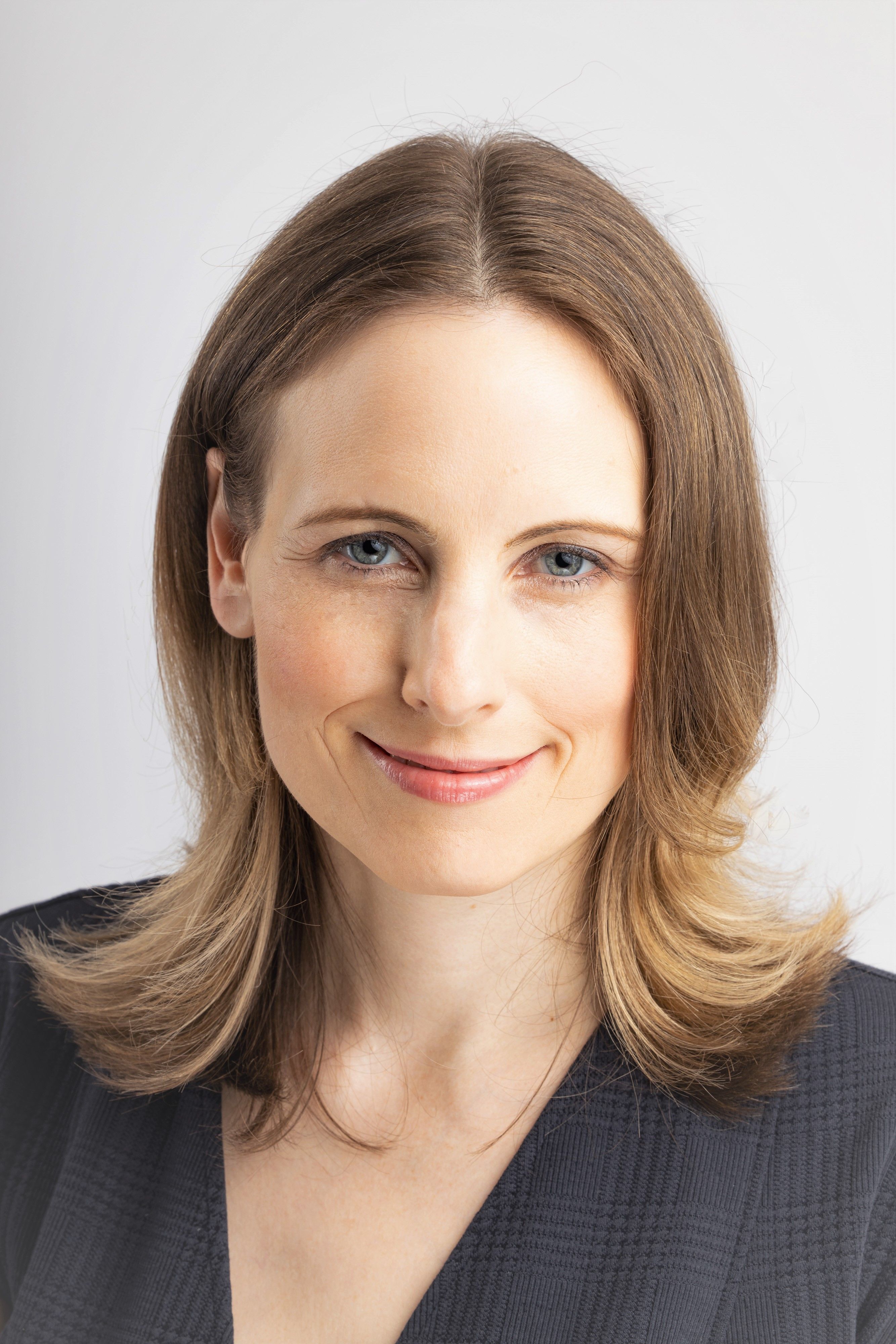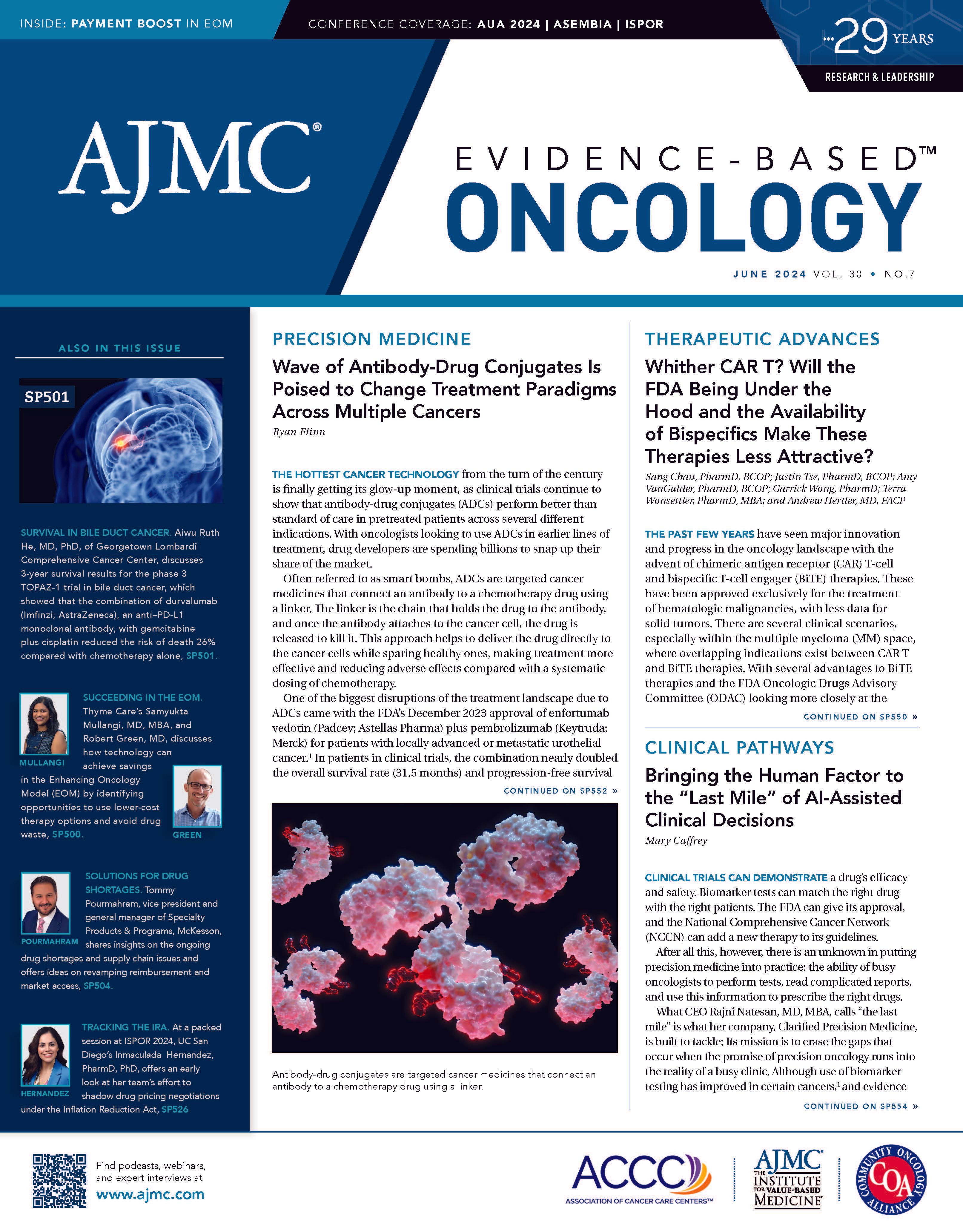- Center on Health Equity & Access
- Clinical
- Health Care Cost
- Health Care Delivery
- Insurance
- Policy
- Technology
- Value-Based Care
Can RWD Sources Estimate OS in Oncology Research?
Interview on Ontada research presented at ISPOR 2024.
Overall survival (OS) is a foundational measure in cancer clinical trials. But when it comes to capturing OS in real-world studies, the question of which data source to use can be tricky. An electronic helath record may not show when a patient has died, and some databases have a lag between a person’s actual death and when that event shows up in the records.
Kat Aguilar, MPH | Image: Ontada

Investigators from Ontada examined the completeness of different real-world data (RWD) sources in recording mortality/vitality and their appropriateness for research, with results reported May 8, 2024, at ISPOR—The Professional Society for Health Economics and Outcomes Research. Kat Aguilar, MPH, director, real world research for Ontada, presented the findings and spoke about them with Evidence-Based Oncology.
As Aguilar explained, there will always be some patients for whom date of death is not recorded in structured EHR data. “We need to find a way to address it,” she said.
One theme of the ISPOR meeting was whether data are “fit for purpose,” ie, whether data can be used to answer the question at hand. Aguilar said there 2 tests for determining this: appropriateness and efficiency.
To test RWD sources for these qualities, the Ontada team examined their completeness among patients with cancers known to have high mortality rates: glioblastoma multiforme (GBM) and metastatic pancreatic cancer (mPC). Adult patients with diagnosed with GBM or mPC between January 1, 2019, and December 31, 2019, were followed through August 31, 2023. Then mortality data were sourced from EHRs and from the following external sources:
- the US Oncology Network’s Financial Data Warehouse (FDW);
- the Limited Access Death Master File, which contains data gathered by the Social Security Administration from funeral homes, financial institutions, postal authorities, and state and federal agencies;
- a commercially available mortality dataset from Datavant; and
the National Death Index (NDI), which is accurate but known to have a reporting lag.
As Aguilar explained, at times it’s important to estimate OS with data sources that are closer to real time than the NDI allows. By evaluating these other sources, she said, “the study shows we’ve got about a 90% capture rate” which meets the test of appropriateness, for “near perfect agreement” with the NDI.
Inclusion of the NDI did add a 5% “lift in terms of the data capture,” but there were also deaths not recorded in the NDI that the FDW and other RWD sources were able to catch, Aguilar said.
Methods and results. Investigators first confirmed vitality status via chart abstraction on January 15, 2023. Then OS was estimated, with and without NDI data, for both the GBM and mPC populations. Results showed the following:
- 173 patients with GBM (median follow-up of 12.0 months) and 990 with mPC (median follow-up of 7.1 months) were included in the analysis; 157 with GBM (90.8%) and 929 (93.8%) with mPC had a death record in at least 1 source.
- Among the 77 patients without any death records, 46 (59.7%) were found to be alive via chart abstraction, for a 97.3% overall rate of mortality-vitality capture.
- Of the 852 patients with multiple death records recorded, 844 had the same month and year recorded across separate sources, for a rate of 99.1%.
Investigators found that using only structured EHR, the FDW, and commercial sources, 993 or 91.4% of all death records were captured. Among the GBM population, the median OS was 13.7 months (95% CI, 11.4-14.7), and 13.5 months (95% CI, 10.8-14.4) without and without the NDI data, respectively.
With 91% of all death records captured without chart abstraction or the NDI, the investigators concluded, “survival estimation without these sources can be a fit-for-purpose and scalable option for oncology research.”
Reference
Aguilar K, Wang Y, Sykes C, et al. Fit-for-purpose and scalable strategy to address mortality completeness for oncology research: comparison of multiple real-world sources with the National Death Index. Value Health. 2024;27(6):S1,CO188.

